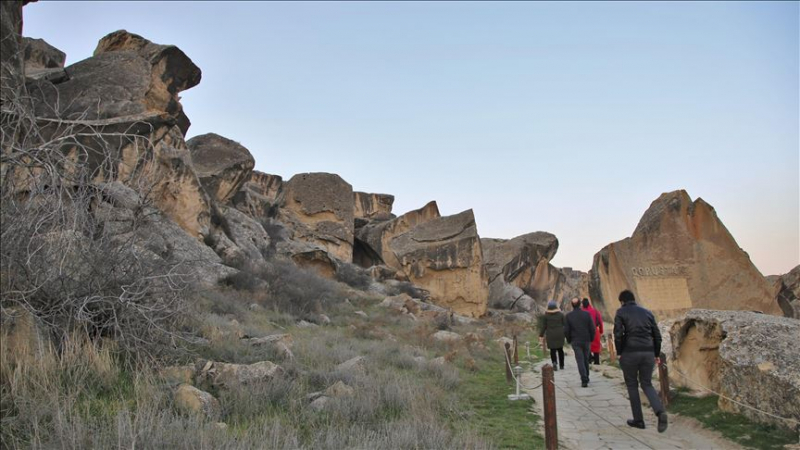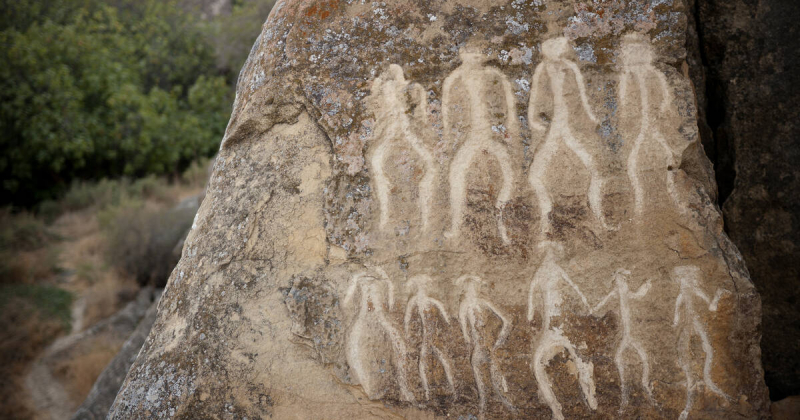Gobustan
The Gobustan State Historical and Cultural Reserve is located west of the Gobustan settlement, about 40 miles (64 kilometers) southwest of Baku's city center. It was founded in 1966, when the area was designated as an Azerbaijani national historical site in order to conserve the region's prehistoric rock sculptures, mud volcanoes, and melodic stones. Because it has a prehistoric cromlech, Gobustan is commonly referred to as the Azerbaijani equivalent of Stonehenge in the United Kingdom (a circle of stones that have been positioned vertically). It doesn't stop there, though: Gobustan, an archaeological site south of Baku, provides a fascinating glimpse into ancient civilizations. Aside from cave and rock carvings, the findings in Gobustan point to signs of habitation reaching back to the Stone Age, including traces of human dwellings and even ancient tombstones.
The archeological monuments in Gobustan State Reserve are many. More than 6,000 rock carvings depict people, animals, battle scenes, ritual dances, bullfights, boats with armed oarsmen, warriors with lances in their hands, camel caravans, and pictures of the sun and stars, on average dating back 5,000-20,000 years, can be found within the reserve's 537-hectare Gobustan Rock Art Cultural Landscape.
Location: west of the Gobustan settlement











